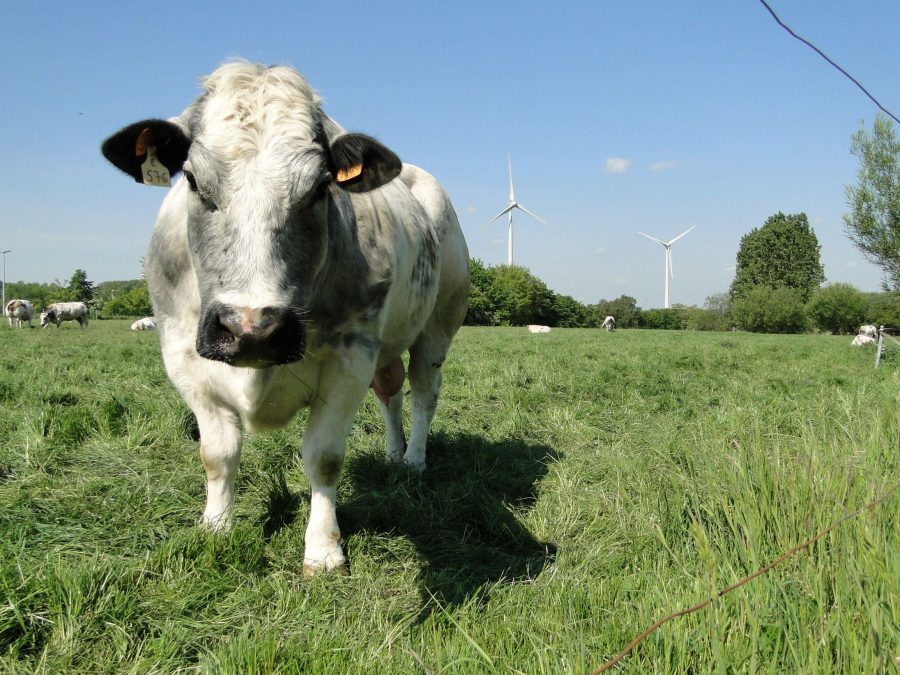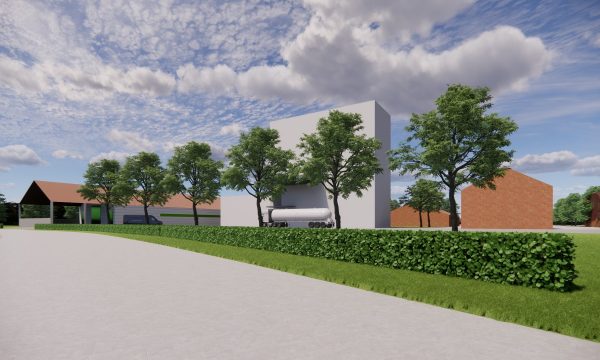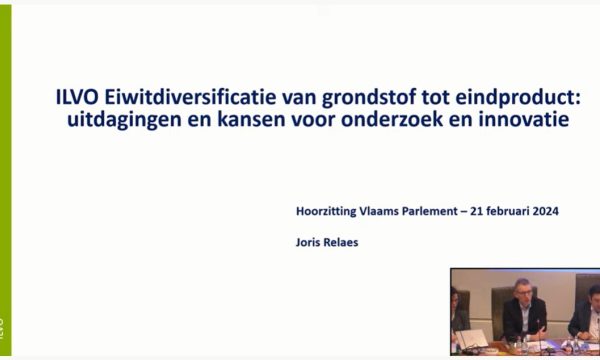Press release 1 februari 2018 @ILVO: press conference about PAS research on nitrogen and ammonia

Nitrogen reduction plan (PAS)
ILVO has for the first time gathered hard figures for beef cattle on the principle that protein digestion in the rumen influences the amount of ammonia emissions. If you give heifers 2% less crude protein the ammonia emissions decrease by 40%. The difference with animals that ate a high protein ration was even 50%. There were no negative effects on growth during the duration of the trial. With a higher or lower cleaning frequency and/or a different litter frequency of the beef boxes, the researchers could not register a significant emission difference in the PAS research house. Also other types of litter (flax shives instead of wheat straw) do not seem a suitable idea as a PAS measure. ILVO aims in this study at possible new PAS measures for beef cattle, because for this group there is still only one measure on the PAS list, namely grazing.
Urgent need for PAS research in the beef cattle sector
Currently, beef cattle producers who need to reduce their ammonia emissions in a relicensing application have few, if any, options.
Sonja De Becker (Boerenbond): "Livestock companies that need to reduce their ammonia emissions can currently only appeal to grazing in combination with (partial) abandonment. There is only one measure available and it is insufficiently geared to meat cattle farming practice, just think of the fattening of bulls. More tailor-made reduction options should avoid imperiling the continuity and expansion of family beef cattle farms. In a first phase, we have set aside 200,000 euros for the co-financing together with Flanders, of research priority aimed at ammonia reduction in the beef cattle industry."
From 2016 onwards, this ILVO research project in the converted PAS research barn, aimed at two avenues: tackling ammonia emissions at the source, i.e. protein feed, and trying to reduce emissions from manure through adjustments in stable management. In Flanders, beef cattle are usually housed in straw bedded stalls and much less often on slats. Low emission floor systems and slatted floors in combination with manure pusher or manure robot are therefore not applicable for beef cattle.
Barn and cleaning management? No.
In the ILVO PAS barn, it was investigated whether the frequency with which the exit area was cleaned, or the frequency with which a barn was strewn with straw, had an effect on emissions. The results were clear: neither more frequent cleaning nor more frequent strewing had an effect. Wheat straw is most often used for bedding in beef barns, and alternative bedding materials such as wood shavings and flax shives are often more expensive, practically more difficult to apply, or little known to livestock farmers. But, based on lab analyses, they do appear to be better moisture and ammonia absorbers than wheat straw. In barn trials with flax shives, the emission reductions in practice turned out to be limited. ILVO concludes that there are serious doubts about the potential of flax shives as an ammonia reducing measure. Further research can provide more conclusive information.
To muck out empty manure storage or leave it alone? The second may be done from now on.
In the measure sheet on 'grazing in combination with an empty manure storage place in the stable' (the only current measure for beef cattle on the PAS list), the condition is that the stable and the manure storage in the stable must be completely free of animals and manure during this period. ILVO research has shown that manure left untouched in a barn without animals hardly causes higher emissions, compared to a barn that is immediately mucked out. Based on these research results, the government has decided to remove the condition that the barn must be free of manure during the grazing period. This gives the farmer more flexibility for the application of cattle manure.
Playing with accurate protein levels? Beneficial for emissions and wallet
Although it is known in ruminants that ammonia emission is a direct consequence of their protein digestion in the rumen, until now no feeding measures for the different cattle categories have been retained on the PAS list. In 2 ILVO animal trials, each time a high protein ration (14 to 15.7% crude protein) and a low protein ration (11.5 to 12.7% crude protein) were fed to Belgian White Blue heifers. These trials show a very strong effect of crude protein and unstable protein balance (OEB) content in the ration on ammonia emissions. A 2% decrease in crude protein results in an approximately 40% decrease in ammonia emissions. The differences in ammonia concentrations between the two feed treatments were up to 50% at times. The protein supply, especially for growing animals, cannot be reduced indefinitely without affecting production results. In these ILVO trials the reduction of the RE content did not have a negative impact on the growth of the heifers, because the DVE requirements remained covered.
Karen Goossens (ILVO researcher): "The low-protein ration almost automatically causes an OEB deficit in the long run. Long-term consequences of this negative OEB have not been investigated to date."
Sam De Campeneere (ILVO- animal husbandry): "Playing with protein supply probably requires the livestock farmer to make stricter ration calculations and besides the RE content also pay attention to the DVE and OEB content. But refining the protein supply and saving on protein will also give a saving in feed costs."
Conclusions for the future: research and a pathway to a PAS measure.
Agriculture Minister Schauvliege: "These research results are significant because they involve a source-based reduction technique for an animal category where there are currently very few reduction options. In order to get this feeding strategy on the PAS list, we need, in addition to proof that the measure reduces ammonia, a method of controllability and assurance. I call on the sector to join me in thinking about the best way to go about this, and I would also like to express my thanks to ILVO for putting this issue high on their research agenda."


